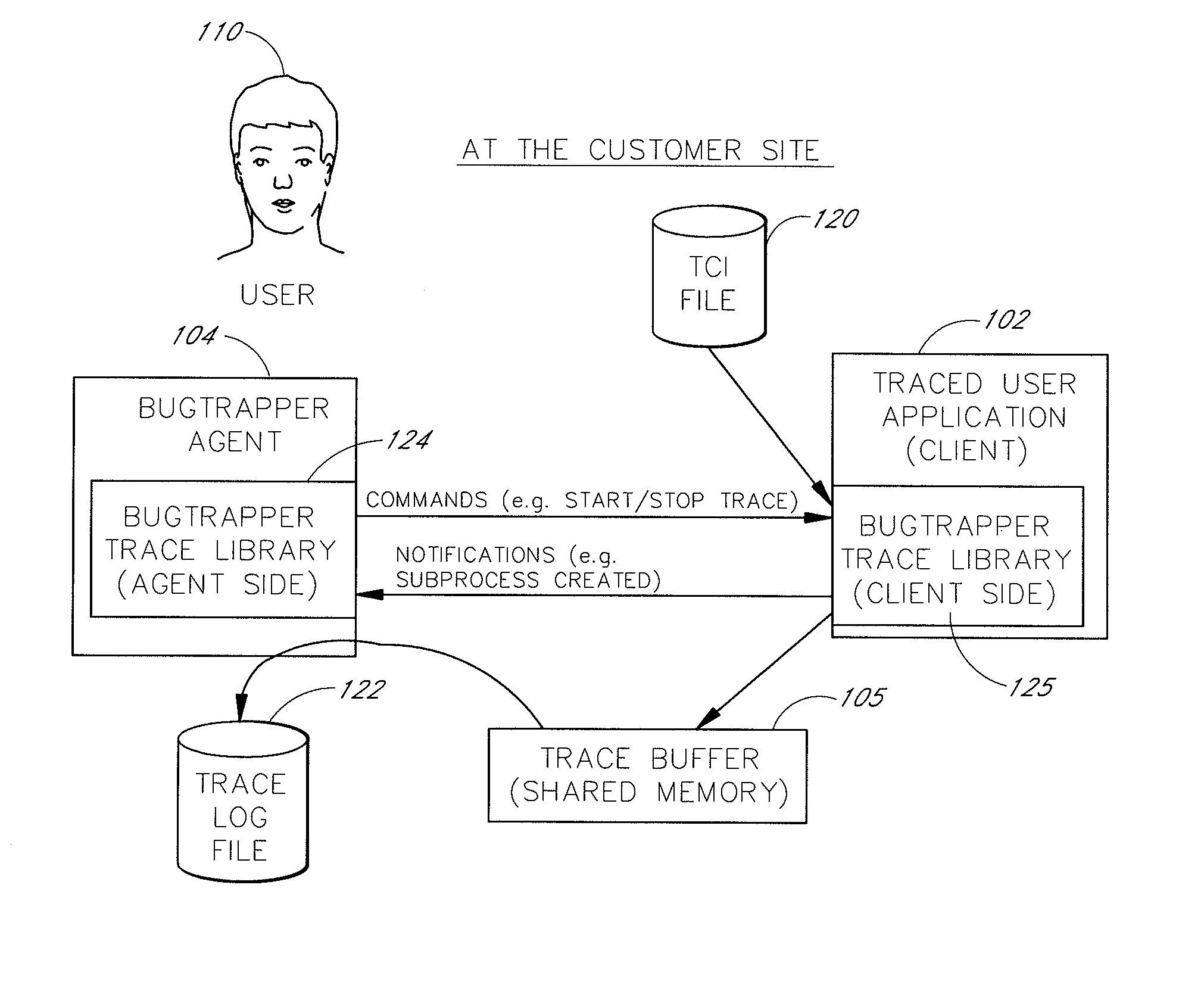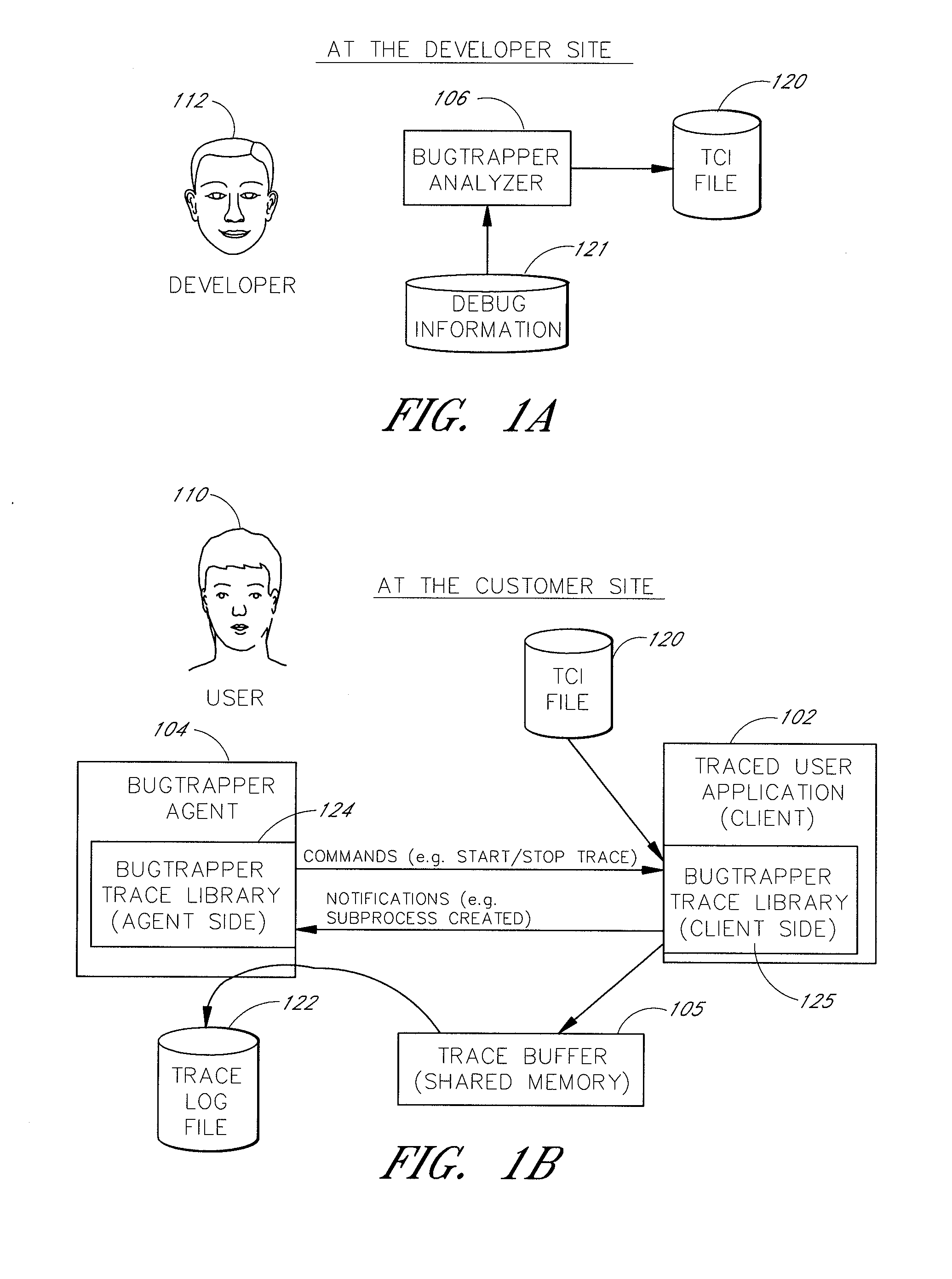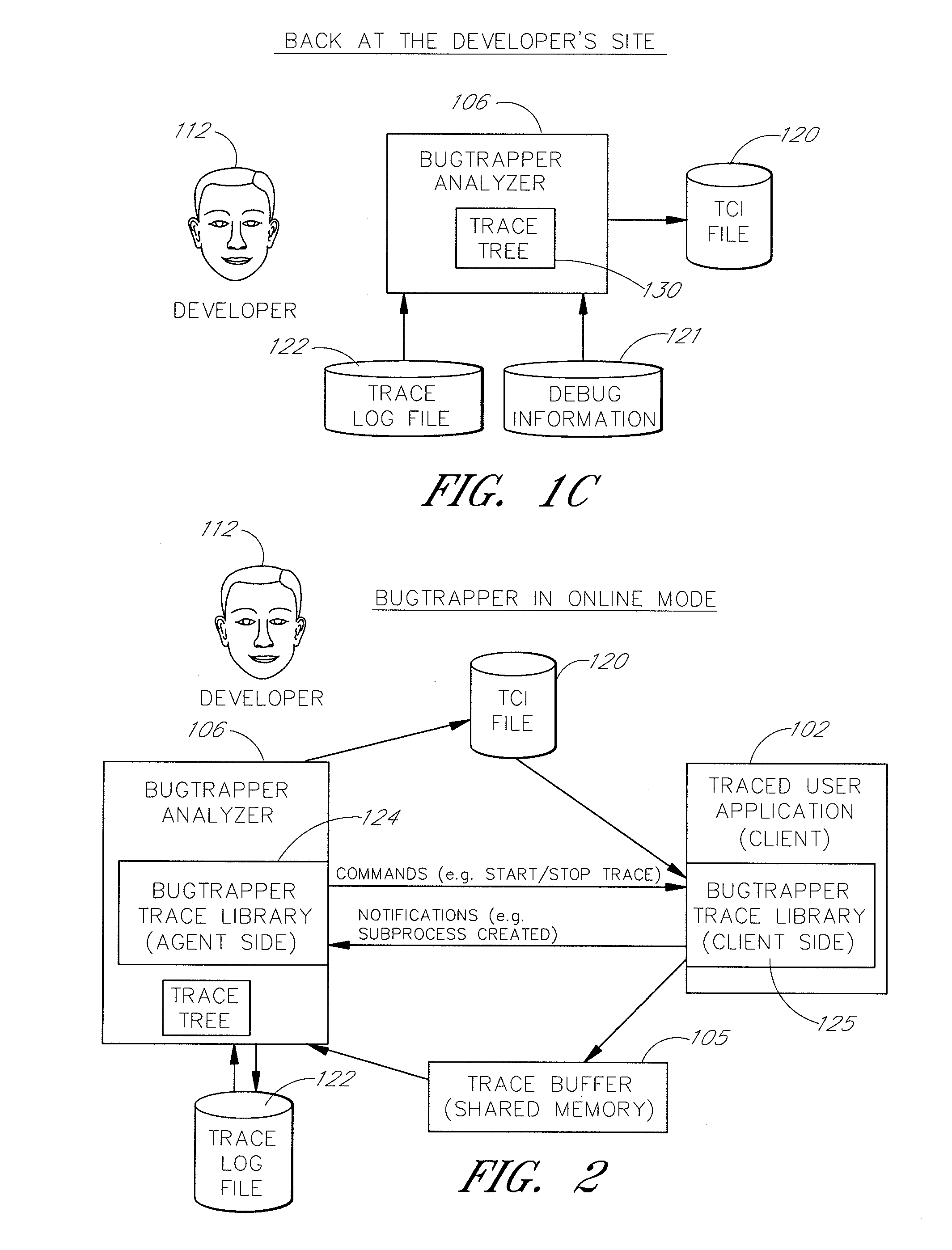System and method for software diagnostics using a combination of visual and dynamic tracing
- Summary
- Abstract
- Description
- Claims
- Application Information
AI Technical Summary
Benefits of technology
Problems solved by technology
Method used
Image
Examples
Embodiment Construction
[0041]The present invention provides a new model for software diagnostics by tracing the execution path of a computer program and user interaction with the computer program. In the preferred embodiment of the invention, this tracing model is implemented within a set of tracing and debugging tools that are collectively referred to as the BugTrapper system (“BugTrapper”). The BugTrapper tools are used to monitor and analyze the execution of a computer program, referred to as a client. One feature of the BugTrapper is that it does not require special instructions or commands to be imbedded within the source code of the client, and it does not require any modifications to be made to the source or executable files of the client. “Tracing,” or “to trace,” refers generally to the process of using a monitoring program to monitor and record information about the execution of the client while the client is running. A “trace” generally refers to the information recorded during tracing. Unlike ...
PUM
 Login to View More
Login to View More Abstract
Description
Claims
Application Information
 Login to View More
Login to View More - R&D
- Intellectual Property
- Life Sciences
- Materials
- Tech Scout
- Unparalleled Data Quality
- Higher Quality Content
- 60% Fewer Hallucinations
Browse by: Latest US Patents, China's latest patents, Technical Efficacy Thesaurus, Application Domain, Technology Topic, Popular Technical Reports.
© 2025 PatSnap. All rights reserved.Legal|Privacy policy|Modern Slavery Act Transparency Statement|Sitemap|About US| Contact US: help@patsnap.com



